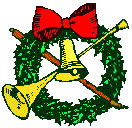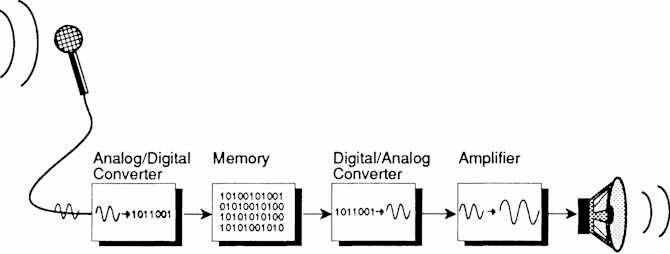| |||||||||||||||||||||||||||||
Arranging Oriental Music by Maurice Biron | mont.bleu@videotron.ca | Strasse 7023
In my case, arranging is very closely related to teaching. As a matter of fact, I began arranging songs for my groups and others’ in the school where I teach (my preference was composing, which I could do only in summers). Five years ago, after I realized from how many different countries the students’ parents were coming from, I thought that I could do some kind of special musical event around this. The thought came to life after four years of arrangement of songs in pop and classical styles. "Sakura," "Momiji" (1997), "Wou Liang" and "Hua Gu Ge" (1998) were to put aside my usual treatment of music found in the treatises of Western music. I can’t pretend to have become a specialist of any Oriental music, it would take years! I just wanted these arrangements to reflect some characteristics of that world. Amoung the sources from which I got some influences are:
You can hear the pieces I am writing about while you read the article:
Who will say something With a traditional or folk song, I discover some musical characteristics of a different area or country. For example, when I first started to work on "Sakura," as for any other song, my first concern was the instrumentation. What the instrument will "say" depends on its capacity to "say" it. As it seems obvious in the following example: an acoustic guitar won’t "say" the same things the same way as an electric guitar would, and surely not as the shamisen (a traditional Japanese guitar) would, as you can imagine… The UltraProteus has some of the sounds for the folk instruments of the Oriental music I that arranged. The effects were to be added by the Ensoniq DP/2. For the sources of both of them, I will give only the number of the preset, the precise parameters would really overload this text. For "Sakura" and "Momiji," my choices have been:
The DP/2 has been used to make some Chorus and Reverb
(number 63) The simili-gong has been added in "Momiji," although it is not purely Japanese but mostly Oriental. I had to add some weight to the melody that had kept pretty light until then; at that point, the melody talks about the Japanese maple trees at the foot of a mountain (you will have the explanation of this technique of word painting below). The Buddhist sacred folk song "Wou Liang" needed:
The DP/2 making a moderate Reverb (number 15) on some instruments and a greater Reverb (number 16) on some others. One special instrument (Falling Up) has been added for its notes in the low register, making a humming sound. I used it as an evocation of the Buddhist chanting meditation. Even if one finds occasional exuberance in Oriental music (Beijing opera, Japanese court music) I opted for simplicity in the Chinese satirical folk song "Hua Gu Ge." I decided to use my Creative Labs sound blaster for "Hua Gu Ge":
Reverb (127/127) has been added for all the instruments. Chorus (32/127) has been added for the English Horn and the Oboe. The instruments are being panned at left, middle and right, evenly.
What will they say To be musically realistic is probably the best way to avoid the pit holes of the machine when it comes to sounds of an acoustic instrument reproduced by a machine. To have the notes of the very low register of the piano played by a flute can be great but it is not representative of the real capacity of that instrument… And the number of instruments or the density of music of Western music is not a trademark of the Oriental music. As it is said, each note counts in Oriental music. Second procedure in the process of arranging is probably the knowledge - content - of the text. To me, here comes the different techniques that the arranger has to choose to support the words. Motives, scales, chords and/or arpeggios around the melodic line, strategic silences and word paintings are some of them. Although word painting can be sometimes very appropriate, it is not always possible and should not be used too often anyway. The following is an example of a subtle word painting taken from "Momiji" when the simili-gong is heard to illustrate the high and low of the mountain: "The Japanese maples and ivies Word painting is the illustration in sounds of a word being sung. For example, an imitation of the sound of a bird when the word bird occurs, or an ascending motive to illustrate an upward idea or elevation. In "Sakura," the consecutive fourths and the stops on augmented fourth chords are meant to bring a soft unfinished musical phrase. Repetition of motives have also been used to give a sensation of echo, as I could imagine the fields of cherry trees surrounded by mountains. "Wou Liang" has no word painting, I rather opted for the evocation of the great structure of the monasteries (mood) and the close world of Tibet. The silence in the middle of the song has to do with the great impact that the holyness of Buddha had on the Oriental culture for thousands of years. In the process of arranging "Hua Gu Ge," I noticed that it would do a very good canon, not having to deal with semitones, not part of the pentatonic mode. The simple rhythm of the snare drum (the English translation of the title of the song being "Song of the Flower Drum"), with zigzagging fast notes would be good enough to put the listener in a light mood.
How will they say it Here is a very important part. As it is often said, all depends in the way you say it! Although the UltraProteus is a good tool, the analogical sounds of the instrument are sometimes not a close imitation of the real instrument but sometimes a rather far imitation of it. The sounds in analogical format are of a lesser quality than in digital format. This has been the case for the Shamisen of UltraProteus, which I did not take in the Chinese music for that reason. Second in importance is how the music will be said is the physical setting. In my case, the physical setting is this one:
Where will it be said As you can imagine, word of mouth usually loses from the original version. Same thing here. So, from me to you, the music that I am talking about, once given its final aspect, has this particular road: At each one of the above steps, a certain level of audio quality is changed. To illustrate it, let’s take a file like "Hua Gu Ge":
At each one of these steps, the level of quality is crucial for the final result, the music that you will hear. You see what I mean? In other words, and as a friend of mine said, the best that you can hear of my music is to listen to it where I write it! Well, let’s be realistic! Plus, the Internet is a great tool of communication, information and entertainment. So, this is the best way I have now to make you hear my music and communicate this information to you!
See the three background pictures, in descending order: 1) the Grand Japanese Gong of the Imperial Orchestra Gagaku; 2) the Chinese Pipa (Lute); 3) the Tibetan Horns Rag-Doung.
|






